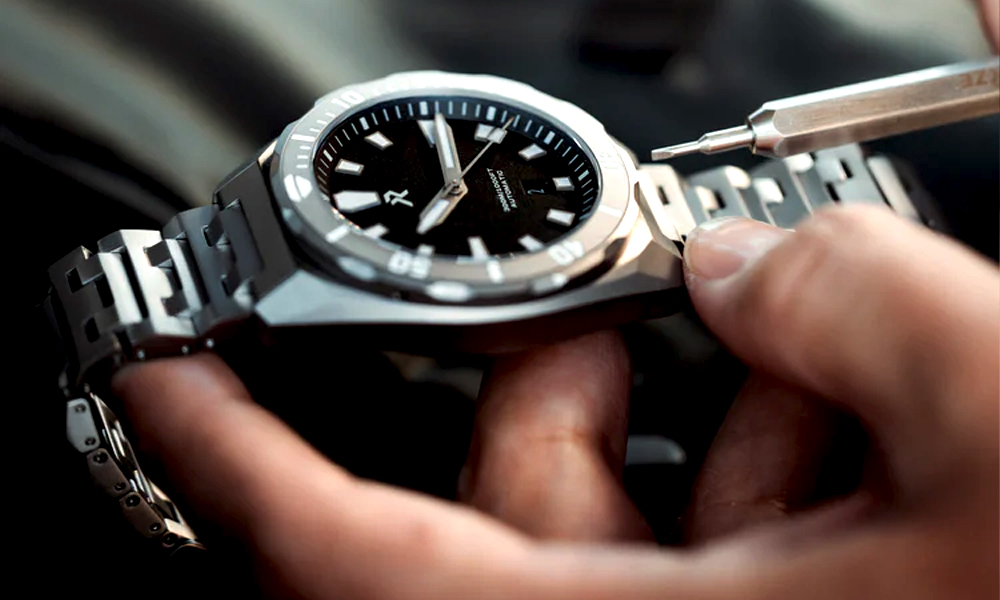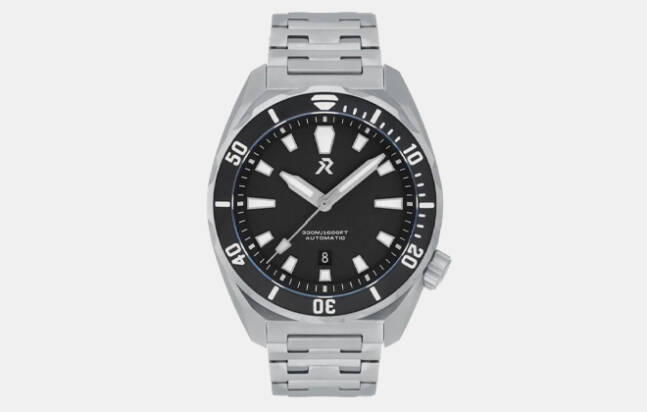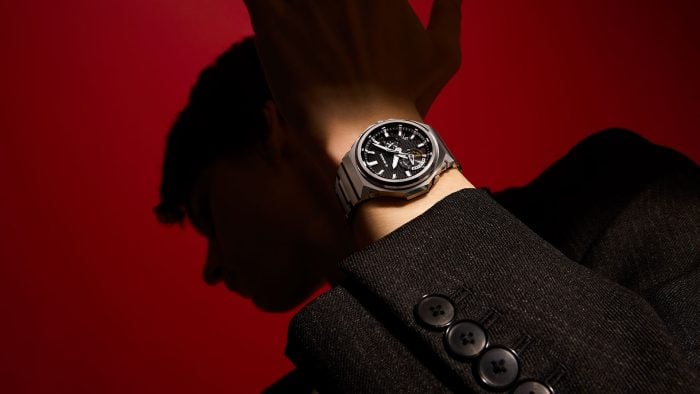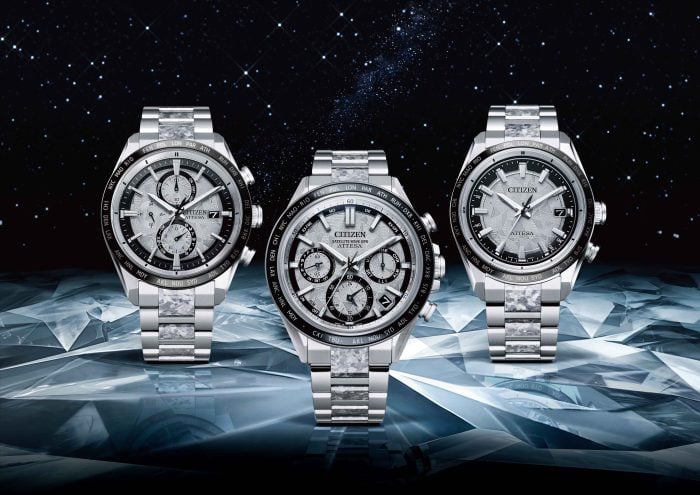Despite the pervasiveness of smartphones and smartwatches, analog wristwatches are still very popular. In terms of materials used for watches, stainless steel is still the overwhelming favorite because it I s strong, attractive, and reasonably priced. Brands ranging from Timex all the way up to Rolex use stainless steel (although Rolex uses a higher grade), and the use of stainless steel in watchmaking will never be obsolete.
Other watchmaking materials, such as gold, silver, bronze, brass, ceramic, and carbon, are also used, but stainless steel is still king. Stainless steel can be brushed, polished, sandblasted, beadblasted, and hardened for different finishes and variations in toughness. It can be used for the watch case, as well as watch bracelets.
But that doesn’t mean there aren’t alternative metal options that take things a step further. One watchmaking metal that has been on the rise for the past few years is titanium.
Fifty years ago, Citizen was the first watchmaker to bring a titanium watch to the masses. It was called the Citizen X8 Titanium Chronometer, and it was revolutionary. Time warp to just a few years ago, and titanium was still in its fledgling states for use in watchmaking. Now, it is just about everywhere. From microbrands like RZE, Baltic, and Phoibos to mainstream manufacturers like Tissot, Timex, Victorinox, Oris, and Hamilton, the use of titanium in watchmaking is growing in strides.
It was just a matter of time before luxury brands like Panerai, Tudor, Bulgari, Omega, and Rolex brought titanium models into the market. Rolex now makes its legendary Yacht Master 42 in Grade 5 titanium, and it has even given the metal a proprietary “RLX” treatment that renders it more scratch resistant. If there was any question that titanium has grown to become the “it” metal in watchmaking, wonder no longer.
Yet well before Rolex used titanium, Singapore-based RZE watches was using it across its product line. The growing microbrand currently uses titanium for all of its eight models. RZE recently released its largest diameter timepiece, the 44mm Aspirare dive watch, which weighs about 50 percent less than a comparably sized Oris Aquis dive watch.
“Titanium is one of the toughest metals used in the most demanding industries, from aerospace and motorsports to tactical gear, due to its strength-to-weight ratio and its ability to withstand extreme temperatures,” Travis Tan, one of the co-founders of RZE, tells me. “As a college graduate in engineering and as a professional airline pilot, titanium was the natural choice when it came to starting my own brand.”
Technically, titanium alloy is the name for the metal used in watchmaking. Titanium is a chemical element that can be combined with iron, aluminum, vanadium, and molybdenum to create the lightweight and resilient alloy metal. It’s known for its high strength-to-weight ratio, as well as its excellent heat and corrosion resistance.
Titanium has outstanding corrosion resistance to seawater, and thus is used in propeller shafts, rigging and other parts of boats that are exposed to seawater. Titanium and its alloys are used in airplanes, missiles, and rockets where strength, low weight, and resistance to high temperatures are important. Titanium weighs about 60 percent less than stainless steel, has high tensile strength, it is non-magnetic, non-toxic, hypoallergenic, and offers excellent corrosion resistance. Stainless steel actually leaches nickel when it encounters sweat and can cause an allergic reaction in some people. The advantages of using titanium in watchmaking are numerous.
But some horophiles criticize the metal. Perhaps titanium’s biggest demerit is its tendency to pick up scratches more easily than stainless steel, which might come as a surprise. Grade 2 titanium is especially prone to scratches, and it’s actually used more often in watchmaking than the pricier and more scratch resistant Grade 5. Grade 5 is a higher grade of titanium that’s alloyed with small amounts of aluminum and vanadium. It has a higher strength-to-weight ratio than Grade 2 titanium, but it’s also harder and, therefore, more difficult to work with. Even luxury brands like Omega and Tudor use Grade 2 titanium, while others, such as Rolex and IWC, opt for Grade 5.
“The benefits of titanium come with the trade off of being more challenging to both machine and finish,” Tan says. “There is not only a higher yield loss than from traditional materials like stainless steel, but the choices of components and certain manufacturing aspects need to be innovated and adapted to manufacture the best possible consumer product. Creating features typically found with stainless steel watches often requires us to research, design, and develop some components in-house.”
Titanium’s vulnerability to scratches can give it a more rugged look that some people appreciate. Some, but not all. To keep the clean and good-as-new appearance while still benefitting from titanium’s strength and weight, RZE developed an UltraHex coating to protect its watches.
“The UltraHex coating provides a clear surface that is nearly to 8x stronger than stainless steel,” Tan says. “While the most common surface hardening methods such as DLC (Diamond Like Coating) offer ~1000Hv, the UltraHex coating is ~1200Hv (on the Vickers Scale) compared to normal 316L stainless steel at ~150Hv. The challenge of developing UltraHex comes not only from the chemical composition itself, but in how it is carefully applied to our cases, bracelets and hardware to maintain the ‘new’ look of a timepiece without compromising the tactile feel or aesthetic of the finishing.”
Advances in how the metal can be worked are changing the conversation watch by watch. Some brands, like RZE and Rolex, have been able to mitigate some of titanium’s drawbacks, and that should prove to be the smart move as titanium grows in popularity in horology. It’s exciting to see how much this tough, lightweight metal has spread throughout the industry to the point where it’s part of the vernacular rather than some rare exception. Look for more brands to get in the titanium game in the coming years with no sign of that pace letting up anytime soon.





